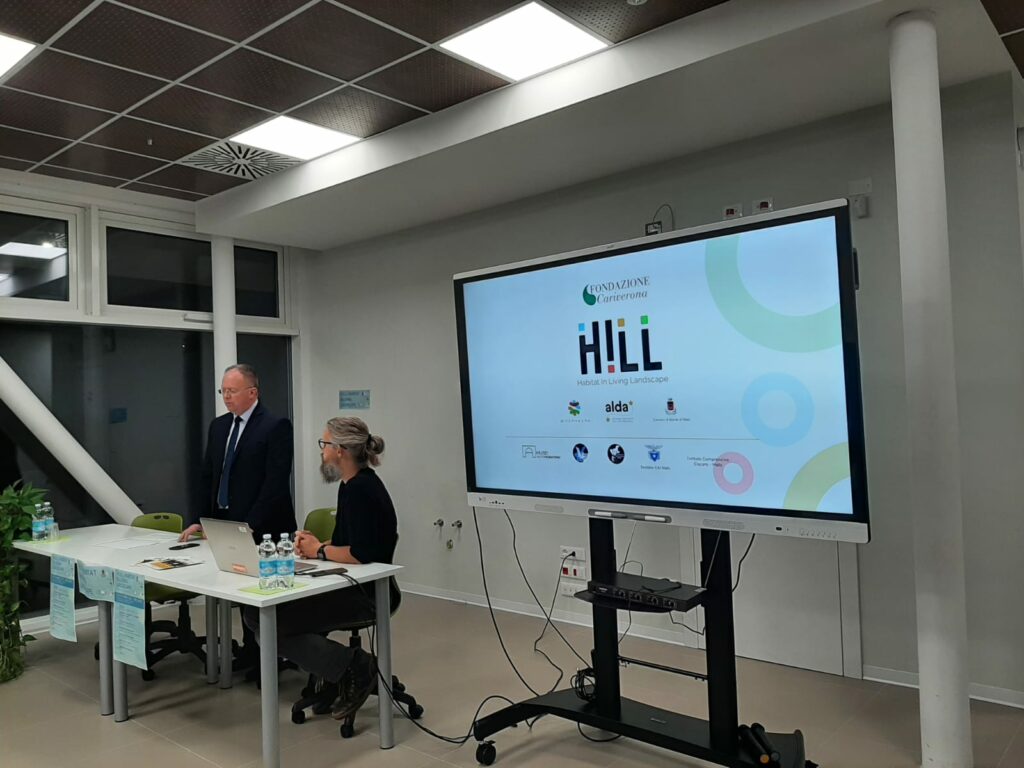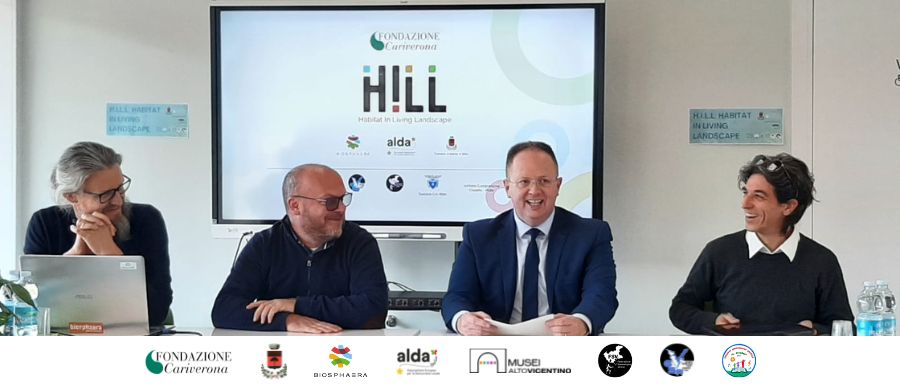On 30 November 2022, the Kick-off meeting of the “H.I.L.L.- Habitat in Living Landscape” project was held in the Municipality of Monte di Malo.
The project will last three years and it aims to protect the natural territory of Monte di Malo, focusing on two sites considered Special Areas of Conservation (SACs): “Buso della Rana” and “Le Poscole”.
The event, organised by the lead partner, the Municipality of Monte di Malo, was attended by the project partners (Cooperativa Biosphaera, ALDA Italia Aps, Federazione Speleologica Veneta, Gruppo CAI di Malo, Rete Musei Alto Vicentino and the Istituto Comprensivo “G. Ciscato”) as well as numerous citizens and stakeholders. The project was made possible thanks to the funding provided by Fondazione Cariverona and the co-founding from the partners.
The evening began with greetings from the municipal administration represented by the Mayor of Monte di Malo, Mosè Squarzon, who strongly advocated for the project. It followed by a speech of Michele Ferretto, from the Biosphaera Cooperative, who illustrated to the participants the project and its objectives, which will involve three areas: natural heritage, cultural heritage and education/awareness-raising.
The project aims at protecting the natural territory of Monte di Malo, focusing on two sites considered Special Areas of Conservation (SACs)
Within the framework of the first area, scientific surveys will be carried out, the Buso della Rana SAC site will be expanded, a management plan will be drawn up and a book will be published. The second thematic area will focus on the enhancement of the Priabonian Museum with the development of rooms and exhibits, the acquisition of collections, and the expansion of the museum’s offerings. Lastly, the third area will include capacity building and awareness-raising actions for citizens, as well as environmental education and hackathons for entrepreneurship.
Roberto Battiston of the Zannato Museum took the floor, emphasising the important correlation between research on the territory and museums.
Battiston’s intervention was followed by a speech of Professor Paolo Mietto, from the Department of Geosciences at the University of Padua, who illustrated the geological time scale and the Priabonian, the last of the four stages into which the Eocene is divided.
The Priabonian is an important reference point that has been studied worldwide and is also a valuable teaching element often proposed as an example and model.
Finally, Marco Boaria, Director of ALDA Italia Aps, and its colleagues, proposed a participatory workshop to the participants. Three different discussion tables were created where attendees could freely propose ideas, expose problems and possible solutions concerning the topics of the H.I.L.L. project. The insights that emerged were subsequently exposed to the entire audience and represent the starting point for the participatory path to the population.



